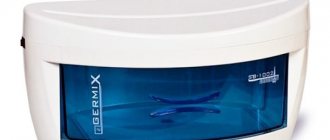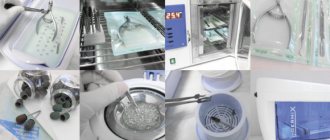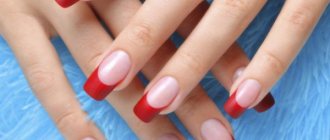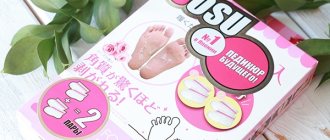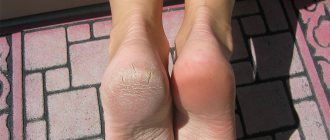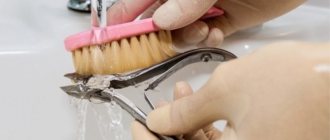Nowadays, it is very important to maintain personal hygiene. Especially when it comes to manicure. A pleasant beauty procedure can lift the mood and self-esteem of both women and men. In addition to the resulting beauty, clients must be safe, which is guaranteed by careful processing of working tools.
Neglecting to sterilize manicure equipment can lead to dire consequences for clients in the form of nail fungus, skin diseases, and this is at best, and at worst - tuberculosis, hepatitis, HIV infection.
To avoid such dire consequences, you should initially think about a reliable disinfection procedure. Today, this issue can be very easily resolved with a Glasperlene instrument sterilizer. This device is especially relevant for manicurists who carry out the procedure at home.
Description and principle of operation
The Glasperlene sterilizer looks like a metal container with a lid (plastic is allowed). Inside there is a special container in the form of a glass made of heat-resistant material. Glasperlene balls (glass beads) are poured into this glass.
How does Glasperlene sterilizer work? It's simple. There are spiral-shaped heaters around the glass that transfer the set temperature to the glass filler. The device is capable of heating the balls to a high temperature of 250 degrees. Thus, when the filler is heated, high pressure is created. Tools are placed inside and left for a while. Hot balls, in contact with the surface of instruments, kill pathogenic organisms, thereby carrying out the sterilization procedure.
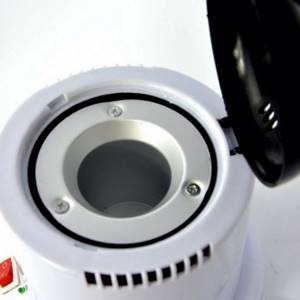
Pre-sterilization cleaning of manicure instruments - the second stage of processing
After the period of exposure of the instrument to the disinfectant has expired, it is removed from the solution and cleaned using regular or brass brushes, as well as cotton pads under running water for 10 minutes. Not only dirt and small particles are washed away, but also the disinfectant itself, which damages the instruments with prolonged exposure.
The recommended washing time can vary from 1 to 10 minutes, see the instructions for the drug. After cleaning instruments under running water, it is recommended to place them in distilled water for a minute to neutralize any remaining disinfectant solution.
The first and second stages can be combined in two cases:
- Chemical disinfection and cleaning, where a disinfectant solution simultaneously dissolves dirt and particles. All that remains is to rinse everything and dry it before sterilization.
- Disinfection and cleaning in an ultrasonic cleaner. The combined effect of the solution and vibrations allows you to fully prepare the instruments for sterilization. After exposure, we also rinse everything with running water.
Manual
Like any other device, the Glasperlene sterilizer also has instructions for use. It is very simple, but requires strict adherence.
Before sterilization, instruments must be treated with a disinfected solution (water with Alaminol) and allowed to dry. Do not allow moisture to get inside the device, as this will lead to its unsuitability and damage to the filler.
30 minutes before the start of treatment, it is necessary to turn on the Glasperlene sterilizer so that it reaches the desired temperature (within 15 minutes). The device has an LED light bulb. If it lights up green, it means that the heating process is still in progress.
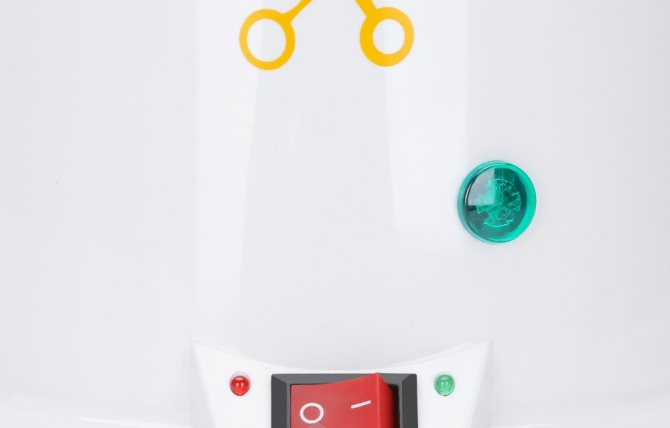
Then take dry instruments that require sterilization and place them inside a heat-resistant flask with filler. The devices should be lowered in the open state (cuticle tweezers and scissors). It is very important here that there is contact between the cutting surfaces and the balls. You should also avoid contact of tools with the walls and bottom of the heat-resistant container.
The residence time varies depending on the size of the manicure accessories. If the instruments are small, then 15 seconds under high temperature pressure will be enough to destroy pathogenic organisms. If the equipment is large, then you should wait 25 seconds. The maximum processing time for instruments in a Glasperlene sterilizer can reach 30 seconds. You should not overexpose manicure tools, as this can lead to damage.
When the required amount of time has passed, you should take out the tools and immediately get to work.
How to sterilize manicure attachments in salons and at home
Disinfection destroys vegetative forms of microorganisms, but it is powerless against their spores. When sterilizing cutters on a manicure apparatus, all known types of pathogenic, conditionally pathogenic and non-pathogenic microbes and spore forms die.
Chemical method
In its pure form, chemical sterilization is the prerogative of industrial enterprises, and sometimes of medicine. It is almost impossible to do this in the nail industry. And that's why:
- the reagents are extremely toxic and require great caution;
- work with them is carried out only in special clothing with respiratory and eye protection;
- the process is completed by neutralizing the surface with distilled water;
- people are required to leave the premises for several hours.
So in salons, manicure cutters are sterilized in special electrical equipment.
Hardware sterilization
The advantage of processing is that the mode and time are set according to the type of nozzle. Therefore, you can sterilize instruments without fear of deformation of the working surface (if you correctly take into account the material used to make the cutters).
- Dry-heat ovens – sterilization with hot air. The exposure is carried out at a temperature of 180-250 ◦ C. Time - 30-120 minutes. The cabinet capacity is equipped with shelves and holders for processing a large number of tools. There is a timer for setting the operating time.
- Autoclaves – hot steam treatment. Autoclaving combines high temperature (130-140 ◦ C), pressure and steam. Only distilled water is used. To completely sterilize an instrument, 15-40 minutes is enough.
- Glasperlene devices for sterilizing manicure instruments. The new product takes up very little space: it is a medium-sized glass filled with tiny glass beads. It’s just right for a cutter, but it won’t be possible to sterilize many instruments in one session. The temperature regime approaches the oven - 230 ◦ C. Treatment lasts from 30 seconds to 2-3 minutes.
Autoclaves are optimal for salon use. But how to sterilize manicure cutters at home , since any of the professional devices are quite expensive?
How often should you change the balls?
In a Glasperlene sterilizer, before starting the procedure, it is necessary to check the suitability of the filler. This can be understood by the shade of the balls. If they become cloudy or acquire gray, yellow, or white shades, then they need to be replaced immediately.
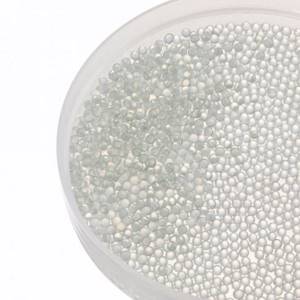
To change, you will need a new package of glasperlene. The device will require about 1.5 packs of filler. After throwing out the old balls, you need to pour 2/3 of the new glass into a metal container.
Glass beads have a total service life of 1 year (regardless of the activity of use).
But it is recommended to change Glasperlen monthly if the device is used daily and for several hours a day.
If the load on the Glasperlene sterilizer is average, then it will be enough to replace it once every six months.
And to extend the service life of the heat-resistant substance, it is enough to wash the balls with a solution of soda every 2 months (you can do it monthly). Then rinse with clean water and let them dry, and then put them back into the metal bowl.
Treating hands with antiseptic
Before performing a manicure, you must disinfect your hands and the client’s with a disinfectant. To do this, you can use the following antiseptics: Neosteril, Octenisept, Bacillol, Sterillium, Kutasept F, Eco-breeze. They come either in sprays or in containers with dispensers.
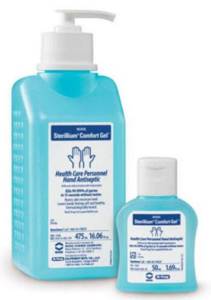
Next, the client’s hands are treated with an antiseptic. Use hand sanitizer twice if there is a risk of contracting hepatitis B or tuberculosis.
Recommendations for antiseptic treatment
- The antiseptic is taken from the dispenser into the recess of the palm
- Nails should be clean and cut short
- When working, it is necessary to remove rings, bracelets, watches
- When applying antiseptic, the skin of your hands must be dry.
- It is recommended to use an antiseptic with components to restore the lipid layer so that the skin does not dry out excessively and is less susceptible to injury and cracking.
- The antiseptic is rubbed into the skin of the hands until completely dry.
Pros and cons of the device
If we consider the advantages of a glasperlene sterilizer, then it is worth noting the most important:
- time of the disinfection procedure (the device is superior to other sterilization methods, since the duration of treatment is calculated literally in seconds, which will allow you to quickly disinfect any metal instrument);
- safety of blades for manicure instruments (the operating principle of the sterilizer does not lead to oxidation, deformation and corrosion of the metal);
- Dimensions of the device: compactness, mobility and low energy consumption.

But it is also worth considering the opposite side. The disadvantages are the following:
- small capacity (small space that allows processing of tools of certain sizes);
- monotony of processing (due to the high temperature, only metal accessories can be processed);
- partial sterilization (only the working part of the instrument is lowered into the filler, the handle remains untreated).
Sterilization of manicure instruments - the third stage of processing
There are several options for sterilization - thermal, chemical, steam, quartz. According to SanPiN, temperature and pressure treatment in a dry-heat oven, autoclave or infrared sterilizer are considered the most effective.
A sterilizer that has such a certificate is included in the State Register of Medical Devices of the Federal Service for Surveillance in Healthcare. You can check the availability of any sterilizer in this register on the Roszdravnadzor website. Be sure to check sterilization equipment before purchasing.
How to sterilize manicure instruments in a dry heat oven
Dry instruments, after disinfection and thorough cleaning, are placed in special craft bags with color indicators and then sent to the cabinet. If there are no craft bags, you can unfold the tools with tweezers. Sterilization occurs due to exposure to high temperature, from 121 to 180 ° C for 30 minutes.
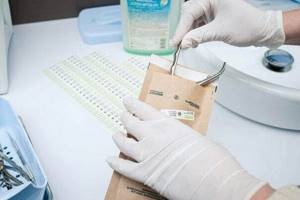
This sterilization option is also suitable for processing cutters used in hardware manicure.
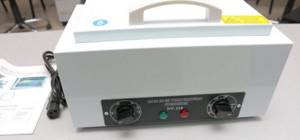
How to sterilize instruments in an autoclave
The installation is more expensive than a dry-heat oven and is suitable for large salons or clinics. Sterilization occurs due to exposure to steam and high temperature from 121 to 137 ° C under a pressure of 1.5-2 atmospheres. Lasts 20-30 minutes. Distilled water is used.
The full cycle of operation of the autoclave includes: heating-sterilization, cooling of the instrument. The whole process will take about 50-55 minutes.
For autoclave processing, paper or plastic bags are used. Plastic ones are transparent, cost a little more, but keep the instrument sterile longer.
According to SES standards, when sterilizing with an autoclave, a sterilization quality log must be kept. To fill it, test strips are purchased, which are placed on bags or inside bags with instruments during each sterilization. After the processing cycle, stickers with color indicators about the quality of the procedure are transferred to the journal.
According to the European standard, autoclaves are divided into 3 classes:
- Class N
- Class S
- Class B
Category N devices are not recommended for nail salons, as packaging cannot be used in them. They process all-metal objects without planes and channels, as well as fabric. These models do not have preliminary vacuumization and drying, so the bags turn out wet after sterilization. There can be no question of any further storage of wet Kraft bags.
Autoclaves of categories S and B can be used for work in a salon or nail salon. They provide vacuumization and drying, and you can process tools in bags.
The full cycle of operation of the autoclave includes: heating-sterilization, cooling of the instrument. The whole process will take about 50-55 minutes.
Infrared sterilizer

There are only two models of infrared sterilizers approved by Roszdravnadzor on the market:
- ST-IK RELMA;
- ST-IK MAI.
The price of each is about 50,000 rubles. Processing in devices occurs under the influence of a temperature of about 200 degrees, but since this is infrared radiation, the metal does not deteriorate.
ST -IK RELMA provides packaging. It is reusable and expensive. Also included is a stand for cutters.
For the infrared sterilizer, it is also necessary to maintain a Quality Log. 1st class indicators are glued to the bags. They connect the packaging lid to the main part. One indicator is enough for one.
There are also 5th class indicators for infrared sterilizers. They are inserted directly into the packaging, and after processing they are pasted into the magazine.
for the ST-IK MAI . Instruments are processed open and must then be used immediately or stored in sterile boxes, a sterile cabinet or a UV sterilizer.
Chemical sterilization
A method carried out using special solutions. Must be performed under sterile conditions using sterile containers, rags, and tweezers for contact with instruments. Conditions must be created for further sterile storage. The result is valid for 3 days. It is not always effective in everyday life in nail salons, however, it is the best backup option if all conditions of the procedure are met.
Quartz, ball or glasperlene sterilizer
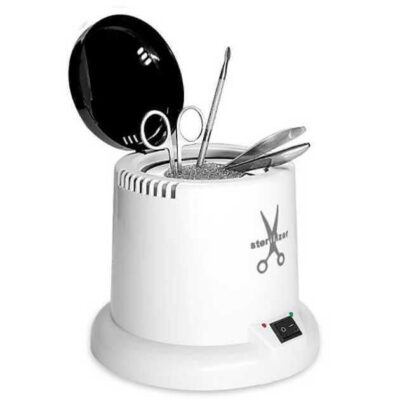
It has both pros and cons. Pros:
- rapid sterilization under high temperature, takes 20 seconds
- mobility – convenient to use by one specialist in the salon, at home and on the road
- possibility of sterilization of cutters for hardware manicure.
- incomplete immersion of the instrument into the treatment area (balls), and as a consequence the risk of re-spread of pathogenic microflora
- The operating temperature of the device does not always correspond to the declared one, which leads to incomplete sterilization
- the need to replace balls every six months, which many craftsmen are not aware of
- rapid wear of cutting parts due to frequent contact with hard balls.
- Ultrasonic sterilizer , despite its name, is intended for the first two stages - disinfection and pre-sterilization cleaning.
- The ultraviolet sterilizer is intended only for storing already sterilized instruments.
Price
The price of a glasperlene sterilizer varies from 1000 to 8000 rubles. It all depends on the make and brand of the device. When choosing, you should focus on the scale of provision of manicure services.
The cost of glass filler starts from 200 rubles per 500 grams. The price of heat-resistant balls depends on the manufacturer and can reach up to 1000 rubles.
It is best to purchase a sterilizer and filler in specialized stores in order to avoid low-quality products.
Disinfection of manicure instruments - the first stage of treatment
For disinfection in salons and when professionals work at home, a chemical method is used. It is based on the use of special disinfectants in the form of solutions, tablets, and aerosols.
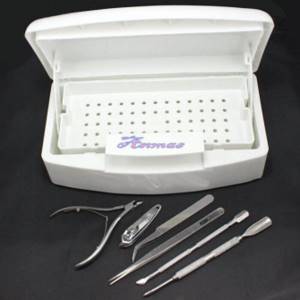
They should have a wide spectrum of effects, which includes antifungal and antiviral effects. The products can be purchased ready-made, or the concentrate can be diluted in the specified ratio.
The ratio is different for each disinfectant, so you must follow the instructions or recommendations of SanPiN. Good disinfection liquids should contain anti-corrosion additives.
Each salon or home technician chooses for himself which disinfectant to use. There is also a list of drugs recommended by SanPiN.

Reviews of glasperlene sterilizer
The device has a positive reputation. Many craftsmen note the ease of use. The main advantage is the time of disinfection. Previously, it was necessary to soak instruments in solutions for 30-40 minutes, which affected customer turnover.

With a glasperlene sterilizer, the processing time is reduced several times, but without compromising the quality of sterilization of manicure instruments.
Hygienic care of manicure cutters according to salon rules
No matter how careful the manicure is, skin particles, nail dust, and grease remain on the instruments. This is an excellent breeding ground for bacteria and spores of causative agents of dermatological diseases. The longer dirty instruments are stored, the more luxuriantly the “infectious bouquet” blooms. That's why treatment of cutters is necessary immediately after a manicure .
Sanitary standards 2.1.2.1199-03 (approved by the Ministry of Health) allow the use of rotating and cutting instruments in salons after four-stage treatment according to the viral hepatitis regime. The process includes:
- treatment of cutters from biological dirt;
- disinfection;
- pre-sterilization cleansing;
- sterilization
After this, the cutters are sealed until next use. This is the order that salon masters follow. You should also adhere to it at home, especially if several people use the manicure set.
Security measures
- Before you start cleaning the device, you must remove the plug from the electrical outlet and wait until it has completely cooled down.
- After cleaning, do not immediately turn on the device.
- Even when the sterilizer is not in use, it must be cleaned regularly.
- Only the surface of the container, the lid and the outer casing can be cleaned.
- If liquid gets inside, you should not try to solve the problem yourself, you need to contact technical support.
- When cleaning, do not use chemical cleaning powders. Only use mild cleaning agents and a soft cloth.
- After completing the procedure, you need to wipe the device with a clean and dry cloth.
- Do not forget to look at the instructions in case of difficult situations.

